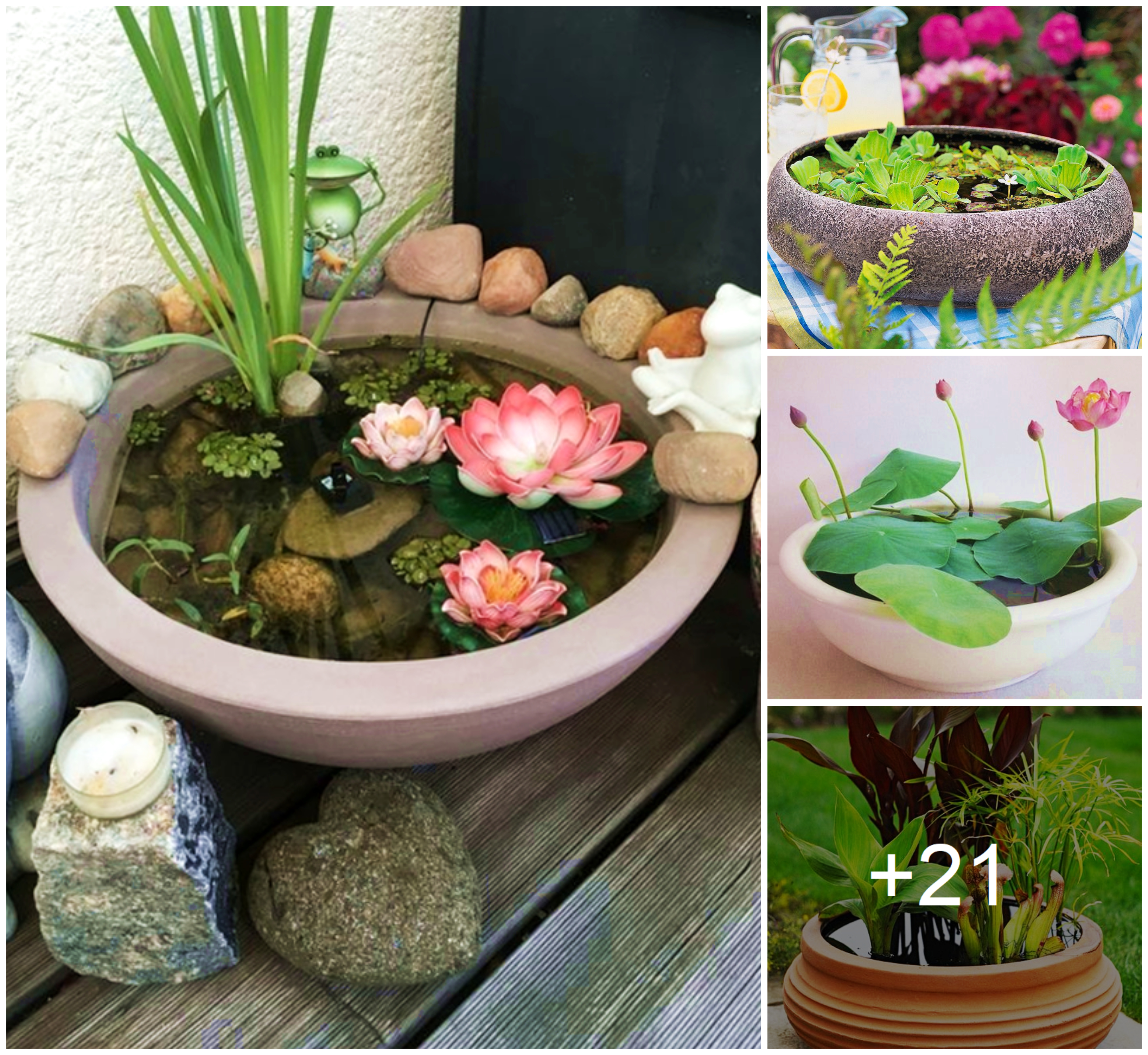1. Scout out a location for your water garden
Remember: Water weighs 8.34 pounds per gallon, which means that even a small five-gallon container would end up weighing more than 40 pounds after being filled with water. Make sure you have a solid foundation for it, whether it’s on a flat surface in your garden, on your patio or on a concrete slab. Be careful with weight when installing a water garden on a balcony or high deck.
Another thing to consider is sun exposure. Too little sun can inhibit aquatic plants, but too much is bad for fish and can lead to algae problems. Ultimately, you want your water garden to get a good mix of sun and shade.
2. Prepare your container
Once you’ve decided on a location for your container water garden, set up the container in its new home and prepare it for water. This should include lining it with dust liner if it is a wooden planter or a metal tub. It may also include covering the bottom of your container with rock, which has several advantages if you are working with a large vessel.
Rock is not only aesthetically pleasing, but it provides media for aquatic plants to attach their roots to. If you plan to keep fish in your water garden in the tank, having rock on the bottom will also give bacteria a place to colonize so they can do their business of filtering out fish waste.
3. Create arrangements with bog plants
If you are using potted plants – “bog plants” – in your water garden, create your arrangement before adding water. Use an odd number of plants for the most aesthetically pleasing effect. Use bricks or overturned clay pots to support these plants. Once they are in place, cover the tops of the soil with pea gravel to hold the plants in place and provide a landing pad for birds and insects.
4. Fill with water
Fill your container with water. The height of the water should line up with the tops of the soil for plant health and for your rocky “landing pads” to be effective. Collected rainwater is the best to use, but you can also use water straight from the tap as long as you don’t have a water softener. Soft water is not good for container gardens because it is too salty.
5. Add your fountain pump
If you are adding a fountain feature to your garden with water containers, do this before introducing floating plants. Fountains are great for adding a relaxing atmosphere to your garden and for keeping mosquitoes at bay. Follow the installation instructions provided by the manufacturer of your fountain. Wait to turn on the pump until all plants are in the garden.
6. Plant floating plants
Floating plants such as water lettuce and water hyacinth should be added towards the end. These plants do not need soil and draw all the nutrients they need from the water itself. Floating plants are great for providing shelter for fish in your water garden.
:max_bytes(150000):strip_icc():format(webp)/raindrops-on-a-water-lettuce-in-the-pond--vietnam--dalat-1320953262-230950bf39b047ebb97ae266fa4d95f1.jpg)
7. Introduce fish
Goldfish or mosquitofish are sustainable choices because they can control unwanted algae and mosquito populations. If you’re thinking about adding fish, make sure they have plenty of room to swim—the general rule of thumb is one to two inches of fish “length” for every square foot of water.
Introduce fish only after you’ve let the garden cycle—and the pump run, if you’ve installed a fountain—for a couple of weeks. This gives good bacteria time to establish and balance your garden.
The best way to add fish is to let them acclimate slowly. Introduce fish while the garden is shaded. Place the bag they come in on top of the water first for about 15 minutes before releasing them. Make sure you feed them regularly – at least in the beginning, while algae develops in the first few months.
:max_bytes(150000):strip_icc():format(webp)/7-0b0cfa26741e4a2fbb90f5b7216c5b44.jpg)
Container Water Garden maintenance
The beauty of container water gardens is that they require very little maintenance. Just make sure the water is always topped up to a healthy level as it will probably evaporate some during the hottest months. Sometimes leaf decay and other debris can clog the water or make it an ugly tea color. This may require some extra cleaning.
If you have goldfish or mosquito fish, make sure you provide a healthy environment for them and keep them well fed. Bring them in during the winter. If you don’t have fish—and especially if you don’t have a fountain in your water garden—prevent mosquito infestations with a tablet like Mosquito Dunk, which contains a bacteria that kills larvae for 30 days.
:max_bytes(150000):strip_icc():format(webp)/8-77c014a273a643d6b2dab27fd43640fe.jpg)
 Flower Love
Flower Love
